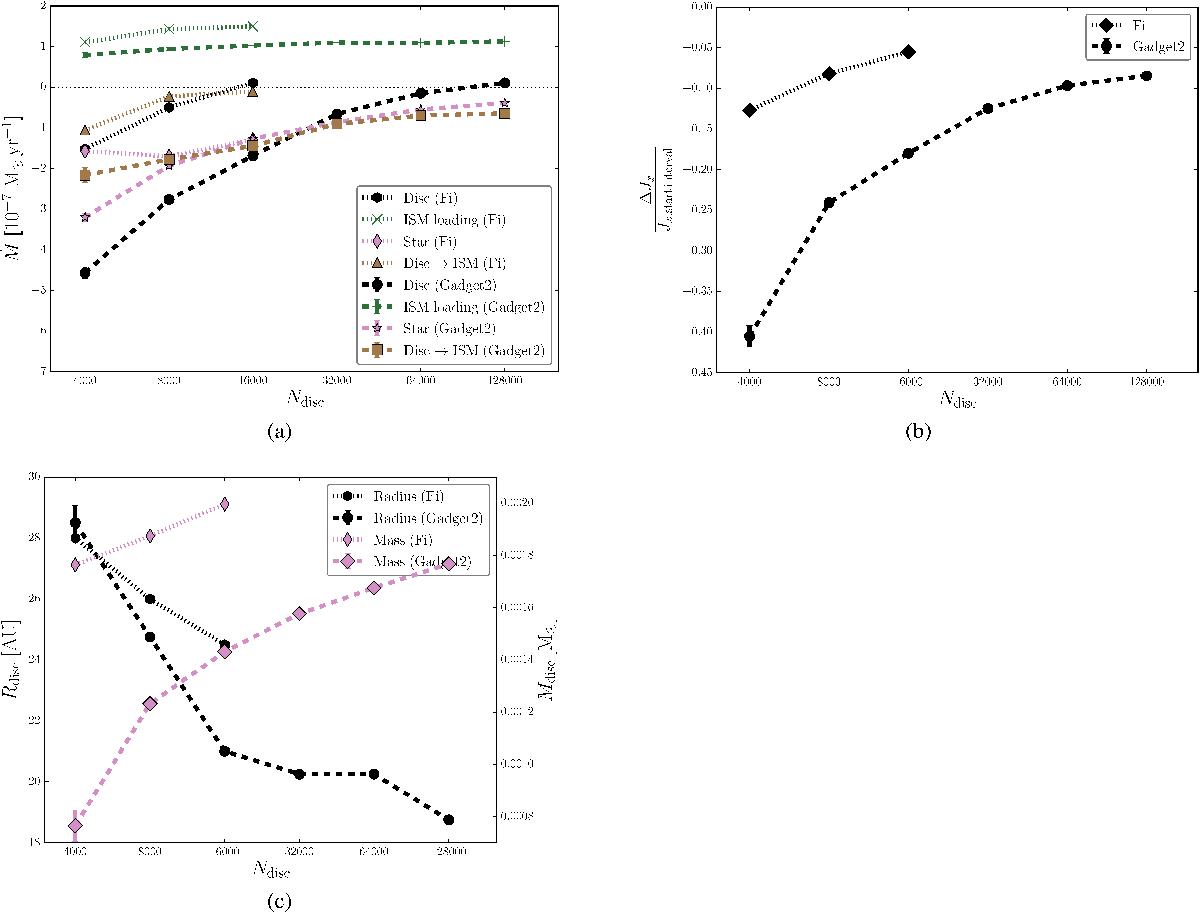Fig. 5

a) Average mass loss and gain rates, Ṁ, as a function of the number of disc particles, Ndisc for both SPH-codes Fi (dotted) and Gadget2 (dashed). The change of the disc mass (black) consists of three components: mass is lost owing to accretion onto the sink particle (purple) and stripping at the outer edge (brown), and gained from sweeping up ISM by the disc and star (green). The rates are determined by a linear fit (see Sect. 4.3.1). b) Loss of angular momentum of the disc during the final 1000 yr interval as a fraction of its total angular momentum plotted against resolution for Fi (dotted) and Gadget2 (dashed). We only consider the angular momentum component along the (initial) rotation axis of the disc. c) Radius (black) and mass (purple) of the disc at the end of the simulation as a function of the number of disc particles, Ndisc for both SPH-codes Fi (dotted) and Gadget2 (dashed). The determination of these quantities is described in Sect. 3.3.
Current usage metrics show cumulative count of Article Views (full-text article views including HTML views, PDF and ePub downloads, according to the available data) and Abstracts Views on Vision4Press platform.
Data correspond to usage on the plateform after 2015. The current usage metrics is available 48-96 hours after online publication and is updated daily on week days.
Initial download of the metrics may take a while.





